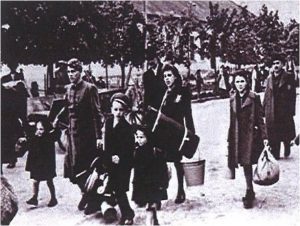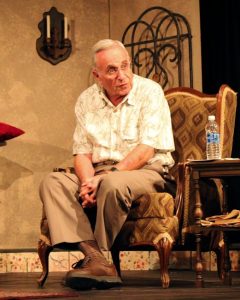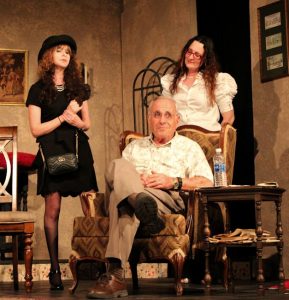Many died at Theresienstadt, but nearly three times as many were sent to their deaths at Auschwitz-Treblinka
 Holocaust survivor Steen Metz will speak at The Laboratory Theater of Florida at 7:00 p.m. on Monday, April 2 as part of the Theater’s expanding tolerance and cultural education programming. His question and answer discussion coincides with Holocaust Remembrance Month in April.
Holocaust survivor Steen Metz will speak at The Laboratory Theater of Florida at 7:00 p.m. on Monday, April 2 as part of the Theater’s expanding tolerance and cultural education programming. His question and answer discussion coincides with Holocaust Remembrance Month in April.
A Danish Jew,  Metz was arrested with his family on October 2, 1943 and deported to a concentration camp by the name of Terezin within the town of Theresienstadt, an 18th century fortress located in Czechoslovakia about 30 miles north of Prague. There, they joined Jews from Vienna, Prague and Berlin. Penniless, deprived of all their belongings, overcrowded, ill-fed and overworked, more than 32,000 perished of disease and starvation between
Metz was arrested with his family on October 2, 1943 and deported to a concentration camp by the name of Terezin within the town of Theresienstadt, an 18th century fortress located in Czechoslovakia about 30 miles north of Prague. There, they joined Jews from Vienna, Prague and Berlin. Penniless, deprived of all their belongings, overcrowded, ill-fed and overworked, more than 32,000 perished of disease and starvation between  the camp’s establishment on November 30, 1941 and its liberation by the International Red Cross on May 4, 1945.
the camp’s establishment on November 30, 1941 and its liberation by the International Red Cross on May 4, 1945.
But this does not count the more than 88,000 Jews who were sent from Theresienstadt to the death camps. Theresienstadt, you see, was a staging area, a ghetto where Jews were temporarily held before being sent on for extermination primarily at Auschwitz and Treblinka, but smaller camps such as Belzec and Chelmno as well.
While 423 of the 500 Danish Jews sent to Theresienstadt survived the Holocaust,  none escaped the malnourishment, disease, discomfort, overcrowding, degradation, humiliation and constant fear of deportation to the death camps that consumed their days and haunted their nights during their stay in the ghetto.
none escaped the malnourishment, disease, discomfort, overcrowding, degradation, humiliation and constant fear of deportation to the death camps that consumed their days and haunted their nights during their stay in the ghetto.
Steen Metz will share his experiences of his life before, during and following his liberation from Theresienstadt beginning at 7:00 p.m. on Monday. Seating is available on a first come, first served basis; doors open 30 minutes prior to the event. There is no fee to listen to Mr. Metz but a $10 donation is suggested. Proceeds will be given to the Holocaust Museum and Education Center of Southwest Florida in Mr. Metz’s honor.
March 30, 2018.
RELATED POSTS.
- Holocaust survivor Steen Metz to speak at The Lab on April 2.
- The plight of Denmark’s Jews during World War II














 Tom Hall is both an amateur artist and aspiring novelist who writes art quest thrillers. He is in the final stages of completing his debut novel titled "Art Detective," a story that fictionalizes the discovery of the fabled billion-dollar Impressionist collection of Parisian art dealer Josse Bernheim-Jeune, thought by many to have perished during World War II when the collection's hiding place, Castle de Rastignac in southern France, was destroyed by the Wehrmacht in reprisal for attacks made by members of the Resistance operating in the area. A former tax attorney, Tom holds a bachelor's degree as well as both a juris doctorate and masters of laws in taxation from the University of Florida. Tom lives in Estero, Florida with his fiancee, Connie, and their four cats.
Tom Hall is both an amateur artist and aspiring novelist who writes art quest thrillers. He is in the final stages of completing his debut novel titled "Art Detective," a story that fictionalizes the discovery of the fabled billion-dollar Impressionist collection of Parisian art dealer Josse Bernheim-Jeune, thought by many to have perished during World War II when the collection's hiding place, Castle de Rastignac in southern France, was destroyed by the Wehrmacht in reprisal for attacks made by members of the Resistance operating in the area. A former tax attorney, Tom holds a bachelor's degree as well as both a juris doctorate and masters of laws in taxation from the University of Florida. Tom lives in Estero, Florida with his fiancee, Connie, and their four cats.